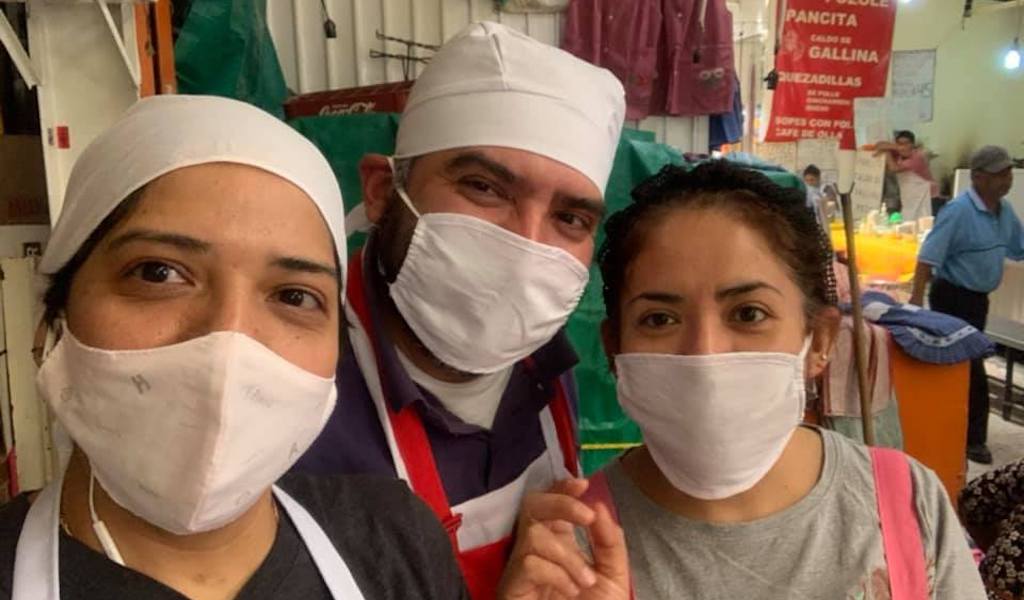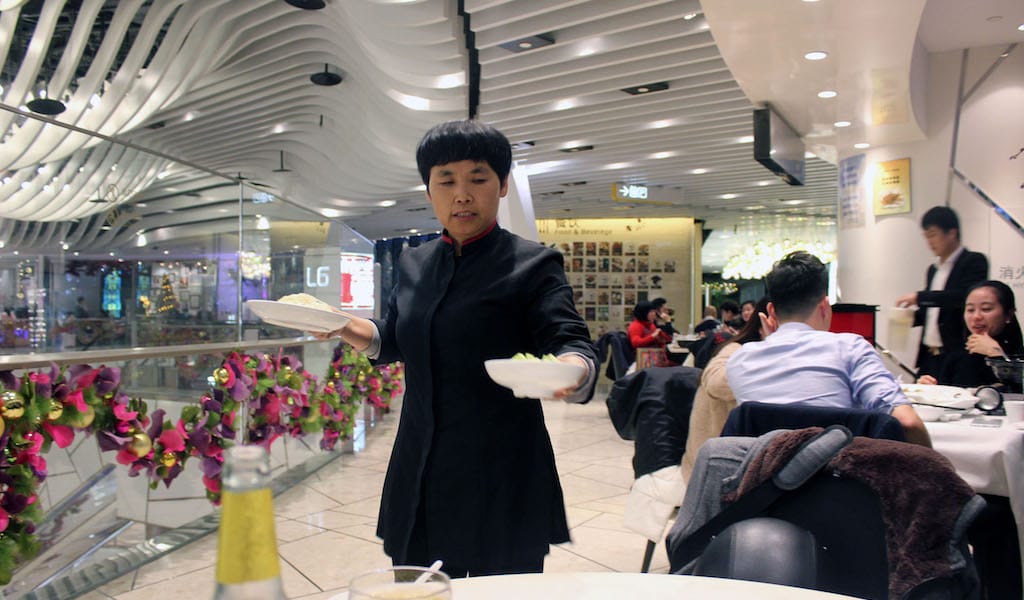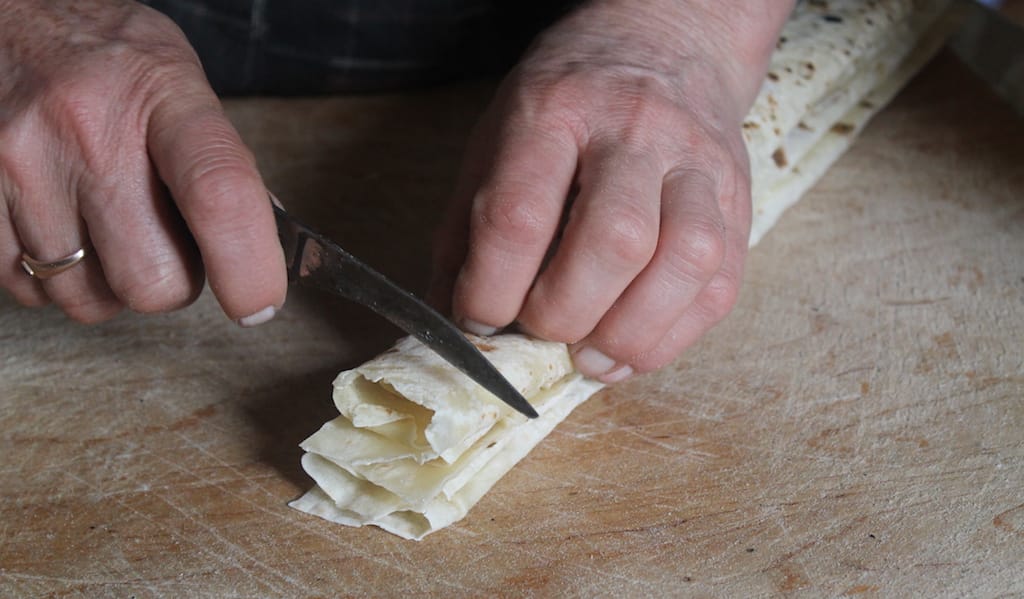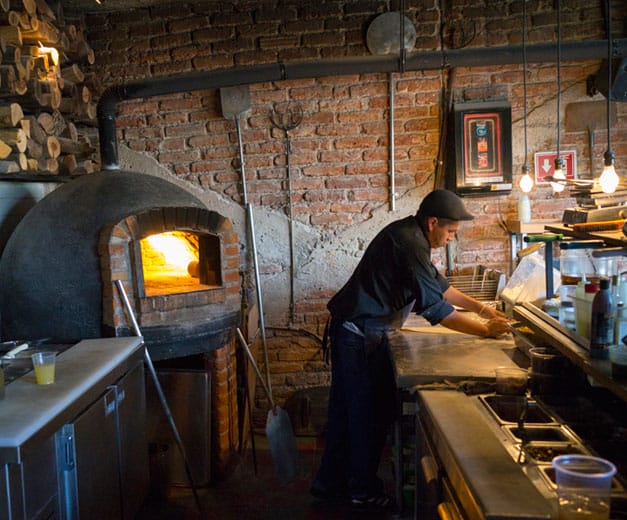Enrique Del Moral (1905-1987) was one of the most important architects of modern Mexico. Together with Mario Pani and Pedro Ramírez Vázquez, he revamped Mexico City in the 1950s. One of his most important designs was the new La Merced Market, which opened in 1957 (the market built in the 1860s was demolished to make way for the new structures). Located east of Mexico City’s Main Square, the massive market used to be the wholesaler for the city, until La Central de Abasto was built in the late 20th century.
Today, I want to talk about a family who has been working for 38 years inside Nave Mayor, by far the biggest of the original seven market spaces in Enrique Del Moral’s design. There are more than 3,000 stands in Nave Mayor, which is 400 meters long and has 32 entry gates (as well as eight daycare facilities for the kids of the vendors). A wide tunnel connects Nave Mayor to Nave Menor, the second largest building.
Don Alberto Mellado, AKA Don Beto, and wife Olimpia started selling vegetables in Nave Mayor almost 40 years ago. They came from San Cristóbal Tepatlaxco, a town in the State of Puebla. Initially everything ran smoothly. But just when they began to feel a sense of security – that they had found a way to make a living – the strongest earthquake of the 20th century destroyed many parts of Mexico City in 1985, killing thousands. The recovery was long and slow, and Beto’s sales dropped drastically.
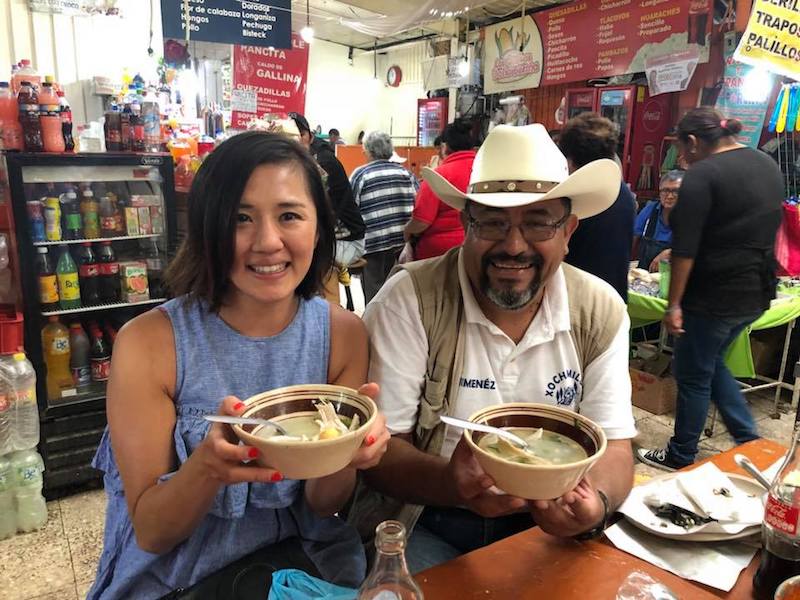
A few years after the quake, they started selling caldo de gallina (chicken broth prepared with mature hens), on the suggestion of one of their relatives. This kind of soup is very popular among the vendors whose work at the market begins in the early morning (as well as the buyers who are there early to shop). It’s been said that caldo de gallina makes you feel stronger and more prepared to face the hard day of work ahead of you. Caldos de Gallina Don Beto became very popular over time, especially among frequent market visitors.
I met Don Beto many years ago, at a time when I could have never pictured myself conducting food tours in Mexico City. I used to help my former mother-in-law, Conchita, with her shopping at La Merced. My job was carrying heavy bags full of dry corn, pork meat, tomatoes, chiles, onions, cornhusks, mole and much more. My mother-in-law had a street stand where she sold tamales for most of her life. Her tamales were always very famous, and after she passed away, they took on a mythical air.
La Merced was her favorite place to get supplies. At the end of the shopping ritual and after navigating the labyrinth that holds thousands of shoppers every day (while also carrying my weight in food), there was one final stop: Caldos de Gallina Don Beto. We used to take a seat and the meal came after a few seconds: a huge bowl with broth and a big piece of gallina, either the neck, one leg, the wings, the back or even the feet (the latter is considered a delicacy among Mexican food lovers). The stand consisted, and still consists, of a very long table for people to sit at, while the cooking stove, the comal (the large griddle used to make tortillas) and the huge bowl with the broth were up against the wall of the market. The stand is basically mounted over the former sidewalk (known as banquetón) of Enrique Del Moral’s beautiful Nave Mayor building, next to Puerta 13 (Gate #13).
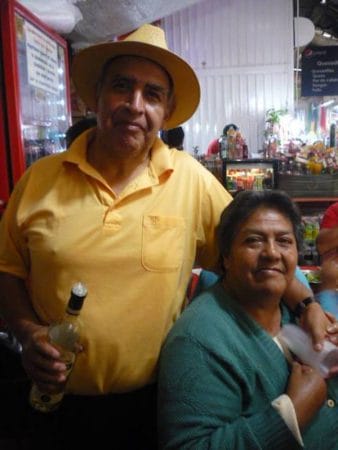 Don Beto and Conchita died two and three years ago, respectively. I took a photo of both of them several years ago, on September 24, during the celebrations of Merced Day, the feast day of the Virgin of Merced. Don Beto looks so happy, giving away tequila shots to his clients – a generous way that vendors of many markets in Mexico thank customers.
Don Beto and Conchita died two and three years ago, respectively. I took a photo of both of them several years ago, on September 24, during the celebrations of Merced Day, the feast day of the Virgin of Merced. Don Beto looks so happy, giving away tequila shots to his clients – a generous way that vendors of many markets in Mexico thank customers.
Every visit feels like a celebration of life, which is why I’ve always enjoyed taking people there. Today Doris, María Concepción and Beto Jr. are in charge. This second generation has faced two terrible market fires in 2013 and 2019. The most recent fire stopped a few meters short of their stand; it also destroyed Enrique Del Moral’s beautiful bird-wing-shaped roof.
Every time Doris sees me approaching, a big smile appears on her face. She immediately looks for the best spot to accommodate me and whomever I am with. It’s clear that they feel proud of the food they make and the people they make it for. It is an incredible sensation to be seated next to people who make the market run each and every day – all they need is a bowl of caldo de gallina!
The pandemic has now arrived in Mexico City, disrupting our way of life. Fortunately, to date, the authorities have considered food stands and public markets as essential businesses that should remain open. A few weeks ago, I asked Doris and her siblings how they are doing. She said they are still open and selling food, practicing all the necessary sanitary precautions. “We will be working until Covid-19 kills us,” she added.
The plan was to persevere, but on Sunday, April 26, they made the difficult decision to temporarily close, as some vendors from Nave Mayor have gotten sick with Covid-19. They are worried about catching the virus and passing it on to family members, especially their mom, Olimpia. According to Doris, authorities have sanitized the market and are recommending “sana-distancia” (social distancing) and the use of hand sanitizer. The one restriction is that stands can only sell food to go.
I’m not sure how long they’ll be shut for, but I do know that I’ll be there, ready to support them, whenever they reopen.
Editor’s note: Paco de Santiago is our lead guide in Mexico City. Click here to read about our various Mexico City walks.
 April 2, 2018 Shanghai
April 2, 2018 Shanghai
In 2017, Shanghai’s longest-running open-air market at Tangjiawan Lu, which had provided […] Posted in Shanghai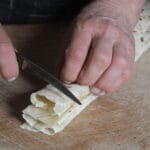 March 8, 2022 CB On the Road
March 8, 2022 CB On the Road
These days, you can buy an Adjaruli khachapuri anywhere from a pizza chain in Bueno […] Posted in Tbilisi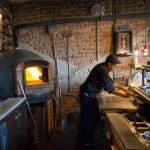 April 2, 2014 A Slice of the Action
April 2, 2014 A Slice of the Action
Mexico City is indisputably one of the world’s great eating capitals, and one of its […] Posted in Mexico City
Published on April 27, 2020
Related stories
April 2, 2018
ShanghaiIn 2017, Shanghai’s longest-running open-air market at Tangjiawan Lu, which had provided the neighborhood with fresh produce, fish and seasonal foodstuffs for almost 115 years, shuttered its doors. The market and much of the area around the Laoximen metro station were some of the last historical (albeit run-down) structures in an otherwise central area full…
March 8, 2022
Tbilisi | By Katharine Khamhaengwong
TbilisiThese days, you can buy an Adjaruli khachapuri anywhere from a pizza chain in Bueno Aires to a grocery store in Tokyo. In Tbilisi, you can get this usually cheese- and egg-filled bread topped with meat and beans, cucumber-tomato salad or wild mushroom stew — the Adjaruli khachapuri has been having a years-long moment. Because…
April 2, 2014
Mexico CityMexico City is indisputably one of the world’s great eating capitals, and one of its main draws is the astonishing regional diversity in the Mexican cuisines that are available here. But sometimes, the only thing that’ll hit the spot is a slice of pizza. Fortunately, D.F.’s got you covered there, too. There are hundreds of…







































